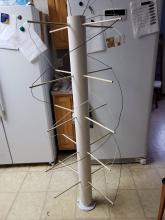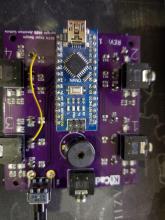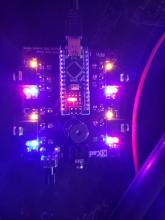Well, I finally went and did it. I built the 6-meter quadrifilar helix I've been talking about for years. Okay, it's not quite done, I'm waiting for a decent pair of wire strippers to arrive, but a week ago I took a four-inch PVC pipe, some 3/8 inch dowels, some Romex, and adhesive and fabricated a QFH antenna. I used a short Python program I wrote to determine the dimensions and, well, I did it wrong. The short wire in what I built should be the long wire at the operating frequency, so the whole thing is too long for the 52 MHz design frequency.



